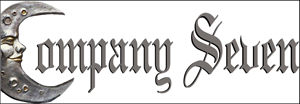
Table 2:
Solar Eclipse Exposure Guide
| ISO | f/Number | ||||||||
|---|---|---|---|---|---|---|---|---|---|
| 25 | 1.4 | 2 | 2.8 | 4 | 5.6 | 8 | 11 | 6 | 22 |
| 50 | 2 | 2.8 | 4 | 5.6 | 8 | 11 | 16 | 22 | 32 |
| 100 | 2.8 | 4 | 5.6 | 8 | 11 | 16 | 22 | 32 | 44 |
| 200 | 4 | 5.6 | 8 | 11 | 16 | 22 | 32 | 44 | 64 |
| 400 | 5.6 | 8 | 11 | 16 | 22 | 32 | 44 | 64 | 88 |
| 800 | 8 | 11 | 16 | 22 | 32 | 44 | 64 | 88 | 128 |
| 1600 | 11 | 16 | 22 | 32 | 44 | 64 | 88 | 128 | 176 |
| Subject: Solar Eclipse | Q | Shutter Speed (s) | ||||||||
|---|---|---|---|---|---|---|---|---|---|---|
| Partial[1] - 4.0 ND | 11 | - | - | - | 1/4000 | 1/2000 | 1/1000 | 1/500 | 1/250 | 1/125 |
| Partial[1] - 5.0 ND | 8 | 1/4000 | 1/2000 | 1/1000 | 1/500 | 1/250 | 1/125 | 1/60 | 1/30 | 1/15 |
| Baily's Beads[2] | 12 | - | - | - | - | 1/4000 | 1/2000 | 1/1000 | 1/500 | 1/250 |
| Chromosphere | 11 | - | - | - | 1/4000 | 1/2000 | 1/1000 | 1/500 | 1/250 | 1/125 |
| Prominences | 9 | - | 1/4000 | 1/2000 | 1/1000 | 1/500 | 1/250 | 1/125 | 1/60 | 1/30 |
| Corona - 0.1 Rs | 7 | 1/2000 | 1/1000 | 1/500 | 1/250 | 1/125 | 1/60 | 1/30 | 1/15 | 1/8 |
| Corona - 0.2 Rs[3] | 5 | 1/500 | 1/250 | 1/125 | 1/60 | 1/30 | 1/15 | 1/8 | 1/4 | 1/2 |
| Corona - 0.5 Rs | 3 | 1/125 | 1/60 | 1/30 | 1/15 | 1/8 | 1/4 | 1/2 | 1 | 2 |
| Corona - 1.0 Rs | 1 | 1/30 | 1/15 | 1/8 | 1/4 | 1/2 | 1 | 2 | 4 | 8 |
| Corona - 2.0 Rs | 0 | 1/15 | 1/8 | 1/4 | 1/2 | 1 | 2 | 4 | 8 | 15 |
| Corona - 4.0 Rs | -1 | 1/8 | 1/4 | 1/2 | 1 | 2 | 4 | 8 | 15 | 30 |
| Corona - 8.0 Rs | -3 | 1/2 | 1 | 2 | 4 | 8 | 15 | 30 | 60 | 120 |
Exposure Formula: t = f^2/ (I X 2^Q) where:
- t = exposure time ()
f = f/number or focal ratio
I = ISO film speed
Q = brightness exponent
- ND = Neutral Density Filter.
Rs = Solar Radii.
- [1] Exposures for partial phases are also good for annular eclipses.
[2] Baily's Beads are extremely bright and change rapidly.
[3] This exposure also recommended for the 'Diamond Ring' effect.
Contents Copyright 1994-2000 Company Seven - All Rights Reserved

